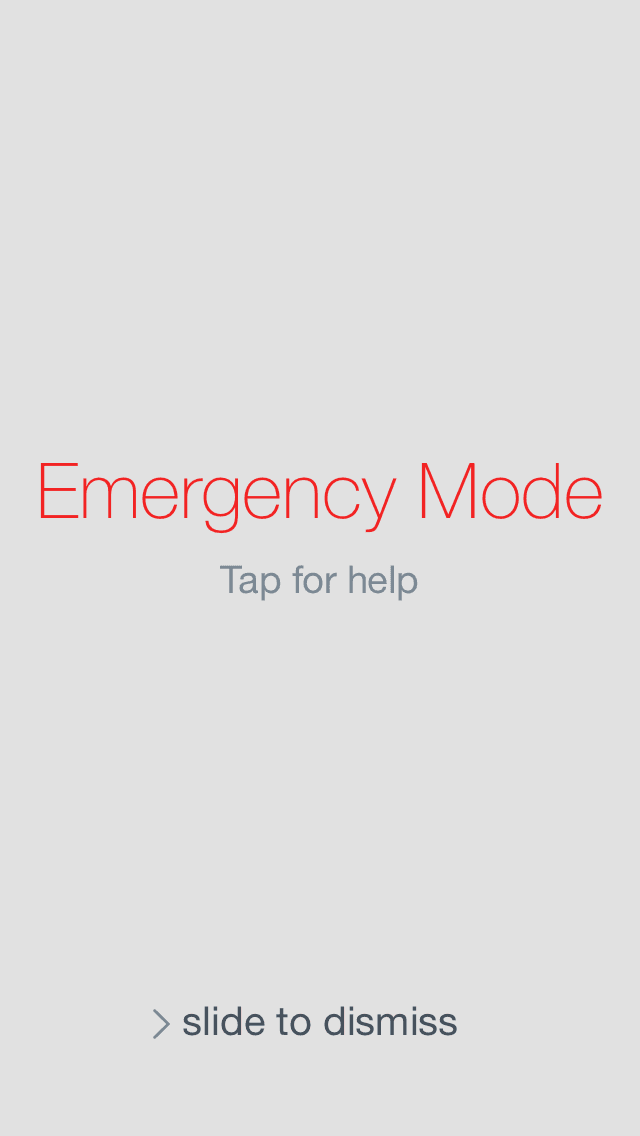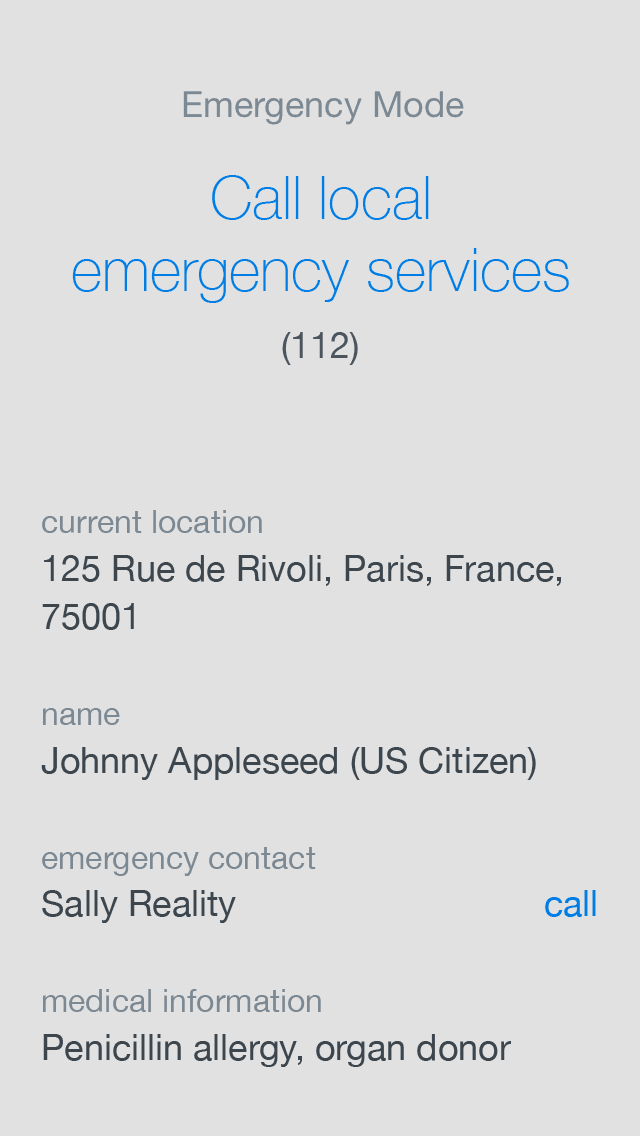Emergency Mode
“What would happen if I were struck down by a car right now?”
That’s a question I ask myself on a far-too-often basis. Considering the rate of occurrence, you’d think I’d have optimized for the scenario with a card or something on my person at all times, detailing points of contact, etc. But in an emergency situation, such as a car accident, good samaritans can only do so much. It’d be a big ask to consider such a wealth of information may possibly be on the victim’s person.
We have devices with us all the time which can help in situations like this. The technology is there, just waiting for the right minds to apply themselves. Think about the kind of information these devices contain; most commonly contacted phone numbers, current (and previous) locations, personal information. Exactly the sort of thing required in an emergency. So let’s explore the potential, shall we?

The way I imagine it, this emergency functionality would certainly justify native implementation in a smartphone OS. Let’s say, for the sake of example, that someone with an emergency mode-enabled smartphone is involved in a car accident. The first person on the scene is alerted to the presence of the victim’s phone by an alert playing from it. Emergency mode—and the alert tone—are activated at the time of the accident thanks to the phone’s accelerometer sensing an exceptional and sudden change in motion (most likely a collision).
When the person on scene picks up the phone, they are presented with a screen letting them know that the phone is in emergency mode, and prompts action.
Tapping the prompt reveals a series of actions and information about the device’s owner, contextual information (what’s the number for the local emergency services? It’s not 911 in Paris, for instance), emergency contacts, allergies and other medical information. These details may also be sent directly to the emergency services on demand or on placing a call, if the technology were developed to support something like that.

The device could also send extra information automatically to the emergency services; rough details of the events leading up to the accident, such as locations, traveling speed, etc. This information, as well as current location, may also be submitted automatically by the device as a distress signal in case no one is able or around to find the device and supply the information automatically.
We’re all carrying devices capable of providing a full black box record of events leading up to an event, as well as personal details to help ensure the right people are informed and important details are known.
This information could also be exposed in other scenarios. What if the phone is lost or stolen? Proper authorities could be given the power to expose owner information on demand. An emergency mode such as this could effectively replace or be an extension of the current “emergency call” functionality currently found in many locked-screen devices.
Obviously, there are a huge number of privacy concerns around implementing a system like this; it would be very easy to find out quite a lot of information about someone by tricking a device into emergency mode. I’m also certain that many minds smarter than myself have already approached this idea. That said, I for one would love this sort of thing in my phone. It’s time we stop freaking out about device surveillance and begin working together to put it to our advantage – starting with the life-and-death scenarios that are already in need of design thinking.